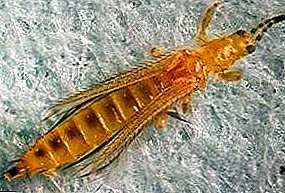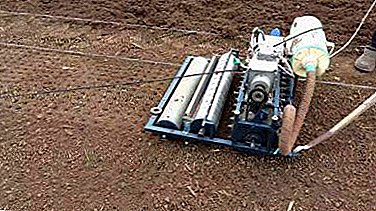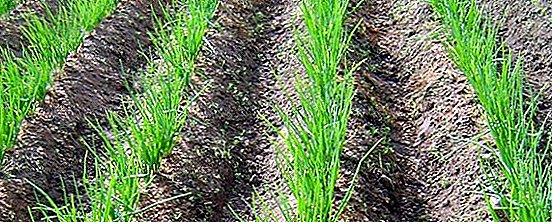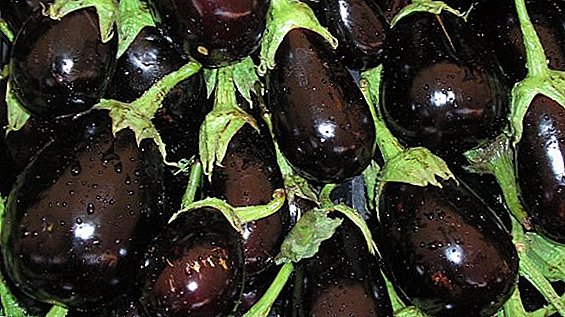
Western or Californian flower thrips is a very dangerous pest that spreads over a large territory of Russia, from the western border to the Siberian and Caucasian regions.
It is dangerous not only because it is almost omnivorous and destroys flower and ornamental plants, fruit-bearing trees, and vegetable plantings, but also can act as a carrier of many dangerous diseases.
At this stage, Californian thrips are seen on more than 250 plants.
Pest description
California thrips is on the list of pests that most often have to deal with plant quarantine and phytosanitary monitoring. Its larvae are often found in loads with groceries and flowers for sale.
Appearance
The homeland of the western flower thrips is considered North and Central Americawhere widespread throughout the mainland from mexico and to alaska. It was first identified in California, and therefore acquired its name. However, there they assume that it was originally brought with flower products from one of the countries of South America.
Adult has length 1.4-2.0 mm. Body narrow, color may vary from light yellow, dark brown. The head is yellow. Fringed-looking wings, slightly darkened. Larvae are similar in appearance to adult individuals, however, they are much smaller in size and have a lighter color.
REFERENCE! The main differences between Californian and other types of thrips are different coloration of some parts of the body and a different structure (different structure of the antennae and setae, different length). Due to its small size, species can be determined under laboratory conditions under a microscope.
Californian thrips spend the winter warm inside the greenhouse - adults hid with plant debris, the larvae - in the ground. Wintering in open ground may occur in warm areas. In the spring, after the seedlings are planted, insects attack it.
Females place the eggs at the top of the stem and the holes in the leaves created. For a month, eating a plant, thrips can postpone up to 300 eggs. This amount can be increased if the insect eats pollen.
The hatched larvae transfer two stages of development on the plant, eating it, and then moving into the soil. In total, the full development of one colony of California thrips takes 15-21 days. In ideal conditions in one year may appear from 12 to 15 generations.
Photo of Western California Flower Thrips:





What plants eats?
Western flower thrips - a pest of a wide profile. He strikes cotton, bow, cucumber, pepper, tomato, strawberries, peach, grapes and other types of fruit and vegetable plants. In addition, the flowers are attacked: roses, cyclamens, chrysanthemums, gerberas etc.
What is dangerous pest for plants
 In the early stages yellow staining occurs, rough edges. Over time, these spots merge together. After the extinction of damaged shoots, they fall.
In the early stages yellow staining occurs, rough edges. Over time, these spots merge together. After the extinction of damaged shoots, they fall.
During the massive infection with California thrips, the destroyed areas are clearly visible, there is a curvature of the stems of infected plants, the delay and deformation of the growth of young shoots.
Kidney flower nutrition leads to disruption and twisting of flowers. Damaged Californian thrips buds are not disclosed and dry. Eating pollen does not allow the plant to form full-fledged flowers.
Characteristic damage is also observed in fruit crops. So, silvery stripes appear on sweet pepper, strawberries change color, the shape of the cucumbers changes and the vegetables are deformed, holes appear on the surface of tomatoes.
In addition to the destruction of shoots, pest is a carrier of viral diseaseswhich are subject to many species of plants. The most common is spotted wilted tomatoes.
The main symptoms of infection - bright yellow spots on foliage, the stem fragments acquire a dark shade. To transmit the infection to thrips you need to eat the plant for 30 minutes.
Features of pest control
 Chemical destruction is difficult due to a number of factors. First of allThis is a very small and secretive insect, and usually hides in the buds, buds, flowers, under various scales. This makes it difficult to ensure direct exposure to chemicals.
Chemical destruction is difficult due to a number of factors. First of allThis is a very small and secretive insect, and usually hides in the buds, buds, flowers, under various scales. This makes it difficult to ensure direct exposure to chemicals.
SecondlyIn America, where he came from, Californian thrips got immunity to a lot of insecticides. In greenhouses, where this insect acts most often, chemicals against it are not compatible with anti-insect agents.
Now the destruction of flower thrips can be done in various ways:
- Mechanical - Plants that may experience a pest invasion need to be covered with a fine net with small cells. She also blocked the window and doorways;
- Agrotechnical - visual inspection and rapid elimination of infected shoots, careful removal of weeds and plant debris. In greenhouses special insect traps are hung that can prevent thrips from settling or, by analyzing the collected insects, determine the degree of infection;
- Biological - The fight against Californian thrips is carried out by releasing special types of ticks and bedbugs in the infected greenhouse. They are able to greatly reduce the scale of the colony, however, it is impossible to completely destroy the pest in this way. In addition, it is necessary to take into account that predator insects attack only larvae, and do not feed on adults;
- Chemical - several insecticides have been developed that can most effectively fight the pest. Basically, these are highly toxic products that should be used at 3-5 day intervals, 2-3 times.
California Californian (Western floral) - A very small pest that affects a wide range of vegetables and fruit trees, decorative flowers. In addition to destroying the plant itself, this insect can transmit a variety of dangerous viral infections. The fight against it is hampered by the fact that thrips are often hidden in buds, flowers, under scales.
In conclusion, we offer you a video about the invasion of California flower thrips:












